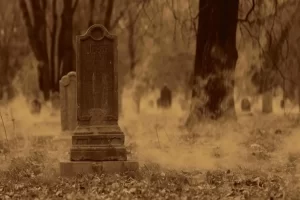Posted On: November 4, 2019 | Posted By: blogger

During every period and in every city, there has always been an upper class of society. Boston was no exception. The Parkman family was one of the richest in the city of Boston, and they aligned themselves with other upper class, wealthy members through marriage.
And as will sadly happen every so often, a crime is committed that is beyond terrifying, and it grips the city with terror. This was the unfortunate case with George Parkman.
Who were the Parkman’s?
Mr. Samuel Parkman produced five children: Elizabeth, Francis, George, Samuel, and Daniel with his wife, Sarah Rogers. Parkman also had six additional children with Sarah Shaw, his first wife. Samuel Parkman, George’s father and the family patriarch, made his money by purchasing land in Boston’s West End area and rental properties. Parkman Senior founded two towns and owned part of them, both named after him: Parkman, Maine and Parkman, Ohio.
Parkman’s placed the sons he had with his first wife in charge of the properties in Parkman, Ohio, while the sons from his second marriage were responsible for the Parkman, Maine properties. Samuel’s passed wealth on to his daughters as well. George’s sister Elizabeth Willard Parkman, was notable in her own right as well. Robert grew his wife’s share of the family fortune by becoming the senior partner in a commercial house in Boston, which did very well thanks to China’s vital trade.
The eleven Parkman children were united in marriage with the well-to-do Boston families of Cabot, Blake, Mason, Tilden, Sturgis, and Tuckerman, mostly Beacon Hill. Samuel chose George as the only one of his eleven children to administer the collected wealth of the Parkman estate.
George’s Early Life
George Parkman suffered from poor health as a young child and leading him to study human medicine. He was selected for the 1809 class of Harvard University at the tender age of 15 years; he was also chosen to give the “Salutory Oration” to his class. Despite being incredibly wealthy and set for life, it was a lecture by Benjamin Rush that inspired George to be concerned with the state of mental asylums, as they were then called.
He later travelled to the University of Aberdeen in Scotland and studied for his degree in medicine. After returning to the United States, George then traveled to Europe under the charge of a former Bostonian, Mr. Benjamin Thompson, who sailed aboard the USS Constitution. Thompson was the one that introduced him to Joel Barlow, the US Minister to France. Barlow then presented George to the vibrant community of doctors in Paris. While in Paris, George was able to see for himself the humane and pioneering treatment methods of two famous French psychiatrists, Philippe Pinel and Étienne Esquirol. The 70-year-old Pinel’s ideas much impressed George Parkman. Parkman was able to work at the Parisian Asylum, under teachers like Esquirol and Pinel. There he learned techniques for the treatment of mental diseases and the French approach to the history of such illnesses. This experience set Parkman on his path in medicine.
Parkman returned to the U.S. in 1813. The War with the United Kingdom of 1812 pressed young men into service for their country. Parkman was commissioned as a surgeon in a regiment of the third brigade belonging to the first division of the Massachusetts militia. He also began his private medical practice in South Boston and simultaneously replicated the practices Parkman had seen in Paris with Pinel and Esquirol.
Parkman had strong ideas with regards to how mental health hospitals should be run. He believed that a residence-like setting in psychiatric institutions should provide an environment where patients could socializing and enjoy hobbies so they could also have the chance to participate in doing meaningful household chores, as permitted.
Parkman thought the French Hospital Pitié-Salpêtrière a fine model of how it should be run and he tried to convince the faculty of Massachusetts General Hospital that having access to a mental health hospital would benefit a great number of its current patients. He wrote two academic papers in 1817. ‘Remarks on Insanity’ and ‘The Management of Lunatics’ were part of an effort to persuade the trustees that Parkman could supervise an asylum that the Hospital was contemplating launching. During that same year George Parkman indicated he would be open to helping raise $16,000 towards the costs of constructing such an institution.
Regrettably, the trustees misinterpreted the offer, believing he had committed to funding the whole project. When the McLean Asylum for the Insane was eventually established the trustees believed that Parkman holding a position did not look appropriate. George Parkman then retired, but his interest in mental health and medicine continued. He visited the patients and to entertain them supplied a mall organ. He even opened his own mansions to treat patients during outbreaks of cholera and smallpox.
His later years
Parkman remained committed to the McLean Asylum and his work there was published in The New England Journal of Medicine and Surgery, which he was involved in establishing. When eventually, his father passed away in 1824, George was given control of the extensive family estate across the East Coast of America. He continued to invest in the purchase of large swathes of land in Boston, including many dense apartment buildings. His real estate business increased the level of his income. Notably, it was George Parkman who sold Harvard Medical School the land they needed for the building of a new school, and the construction of the Charles Street Jail.
Parkman was a familiar sight on the streets of Boston. His daily walks were both business and pleasure, striding between his properties, where he collected his rents in person. George Parkman often wore a top hat, and by all accounts was a gentle person who worked hard and lived simply. He was most interested in helping the physically and mentally ill of society.
The Murder of George Parkman
George Parkman was murdered on Friday, November 23, 1849. After an extensive search by the new Boston police force, Parkman’s dismembered and partly burned body was discovered on November 30 by a janitor at Harvard Medical School. The funeral for George Parkman was held on December 6, an event for which thousands of people lined the streets of Boston.
John White Webster, a professor of chemistry and geology at Harvard Medical School, was convicted of murdering George Parkman in a trial that rocked Boston.
The aftermath
The murder of George Parkman, and Webster’s trial and execution, was extremely distressing to Parkman’s widow and children. In fact, this was one of the first times that forensic anthropology would be used in court. They became virtual recluses in their home at 33 Beacon Street, and neither of their two children ever married. When their mother died in 1877, the children inherited the entire estate. After his sister Harriet’s death in 1885, George Francis remained the sole heir to this considerable fortune. When George Francis died on September 16, 1908, the estate was valued at nearly $5.5 million. Almost the entire estate was left to the city of Boston. Today the George Parkman house still stands at 8 Walnut Street in Beacon Hill.
How is the George Parkman house haunted?
The remains of George Parkman were stuffed into a privy that was located in Webster’s lab. Years later, the toilet in the Parkman house on the 3rd floor would overflow, causing water to rush down the stairs. It is said by many that George Parkman continues to haunt the house to this day. Perhaps his spirit is still not at peace?
Parkman and Webster apparently had argued over money that Parkman lent to Webster. And although a court of law convicted Webster of the murder, some people were not convinced of his guilt. There were those in town who felt that the janitor who coincidentally discovered the dismembered remains of Parkman was the one who should bear the responsibility.
Conclusion
George Parkman had the financial means to live a life of luxury. However, he was more interested in living simply and helping the mentally and physically ill. Unfortunately, he was brutally murdered and dismembered. Parts of his body were stuffed in the bathroom of the lab. So, is it a coincidence that the toilets in his home overflow and water was seen rushing down the stairs? It’s an interesting question. Perhaps next time you are visiting Boston you can check out the George Parkman house and try to decide for yourself.
Sources:
https://www.onlyinyourstate.com/massachusetts/boston/parkman-house-boston/
https://boston.curbed.com/maps/haunted-boston-tour-halloween
https://www.renthop.com/blog/2016/10/13-haunted-buildings-in-boston/


